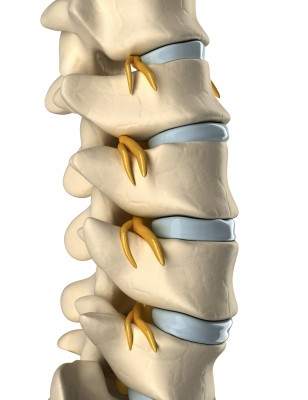Finding the Best Chiropractic Clinic: What to Look For

In downtown Toronto, and indeed in many towns, myths about chiropractic care abound. From the notion that once you start seeing a chiropractor, you’re committed for life, to clinics that insist on extensive treatment plans before providing relief, it’s crucial to discern fact from fiction. As a chiropractor with over 18 years of experience, I’m passionate about my profession. However, I’m also aware of practices that don’t always align with what I believe is ethical. Let’s address these concerns and guide you on what to ask when visiting a chiropractic clinic.
Best Chiropractic Clinic, Bad Chiropractic Clinic, Ugly Chiropractic Clinic
In this article, I will address these issues and reveal to you the best practices, and the direct questions to ask when going to a chiropractic clinic anywhere. Remember, with any profession there is the good, the bad, and some that I admit are downright UGLY.
1. Immediate Treatment: Is It Possible?
Myth: You can’t be treated on your first visit to a chiropractic clinic, especially when in pain.
Truth: Immediate treatment is often possible and beneficial. While some clinics may delay treatment for various reasons, it’s rarely unsafe to provide relief from the first visit. Always inquire if immediate treatment is an option, especially if you’re in acute pain.
There are circumstances when you should not treat a person right away with chiropractic adjustments. This would be when the history includes such things as a recent accident, trauma, cardiovascular issues etc…
Even when there is trauma, a chiropractor can still treat it without using chiropractic adjustments. The goal would be to decrease inflammation or to decrease pain to make the person feel more comfortable.
See Also: Guide For Finding The Best Chiropractor In Your City
Bottom line: Rarely is it unsafe to treat on the first visit. Look for a different chiropractic clinic if they cannot justify it.

2. The Myth of Killer Subluxations: Best Chiropractic Clinic
Myth: Subluxations are dire threats that can lead to severe health consequences.
Truth: While subluxations, or minor misalignments of the spine, can cause discomfort and affect nerve function, they are not death sentences. An honest chiropractor will explain the nature of subluxations without resorting to fear-mongering. Always seek a clear, factual explanation of your condition.
A medical subluxation is a “significant structural displacement, and therefore visible on X-rays”, whereas chiropractic subluxations are more subtle and usually only palpable with the skilled hands of a chiropractor.
The World Health Organization defines chiropractic subluxations as separate and different from medical subluxations.
Simply put, if a chiropractor tells you will have dire health because of subluxations you should leave. If they are telling you that subluxations pinch the nerves that go to various organs and can affect the way they function, that is being honest and true.
The difference is fear-mongering versus simply giving the facts.
3. Lifetime Commitment to Chiropractic Care?
Myth: Once you start seeing a chiropractor, you must continue indefinitely.
Truth: Chiropractic care should be tailored to your individual needs, including the decision to continue with maintenance treatments. Three phases of treatment are involved with most treatment plans.
- Acute Phase or Initial Intensive Care: The idea is to eliminate pain and swelling.
- Sub-acute Phase also called Rehabilitative Care: Here you are strengthening muscles and improving spinal function. This is great except that many chiropractors are just giving chiropractic adjustments and giving very few exercises or none at all. Giving you the “Big Three” rehab exercises is not a rehabilitation program.
- Maintenance/Wellness Care: This phase should be Your Choice. If not needed, move on.
Bottom line: You don’t need to be treated on a maintenance or wellness plan forever. It should be your choice. If not, move on.
4. The Three-Minute Treatment
Myth: A three-minute chiropractic session is sufficient for your needs.
Truth: Effective chiropractic care requires more than just a few minutes of treatment. A comprehensive session should include time to assess your progress and adjust treatment accordingly. Inquire about the duration and content of each session to ensure your care is not rushed.
Three minutes is not enough! Whether you are seeing a medical doctor or getting a chiropractic adjustment, you have a bad relationship if each encounter is only three minutes long.
Why? It takes more than three minutes to connect with a person to find out how things are.
“But I’ve been told it needs to be quick.” Don’t be fooled!
Many chiropractors will put a machine on you to help with pain or inflammation and leave the room to tend to other patients. This is great as long as there is more than this involved in that treatment session.
Bottom Line: Many chiropractors spend about 10 minutes. I believe it should be a minimum of 20 minutes.
5. Understanding the Costs
Concern: The cost and commitment to a predetermined number of visits can be daunting.
Advice: Transparency regarding costs and treatment plans is essential. Be wary of clinics that push for long-term, pre-paid treatment packages without a clear rationale. A reputable clinic will provide a straightforward explanation of costs and treatment expectations.
6. Will I Need X-rays? Will This Chiropractic Clinic Make Me Get X-Rays?

Not everyone requires an X-ray, but some doctors of chiropractic take them as standard procedures, either as a defensive practice to rule out pathology and/or to aid in determining where to adjust the spine.
Unfortunately, in this litigious society, I cannot blame any chiropractor for taking an X-ray of each patient. While I don’t X-ray every patient, it can be helpful in many cases
X-ray Guidelines: Best Chiropractic Clinic Guideline
- If the patient has sustained a significant traumatic injury at any age
- If the patient has experienced any type of trauma (even a minor one) if over the age of 50
- For most patients over 70 years of age, especially if the patient’s history and examination suggest a possible bone disease (such as arthritis)
- If the patient has had long-standing pain that has not responded or been resolved with previous chiropractic health care.
SEE ALSO: MRI, CT Scans X-rays: Which One For My Pain?
Questions to Ask Your Prospective Best Chiropractic Clinic
- Can I be treated on the first visit?
- Can you explain what a subluxation is?
- Do I have a choice if I want maintenance treatments? Can I stop treatments whenever I want to stop?
- How much time will the chiropractor spend with me? Does this include the use of modalities (machines, to help with pain, healing, or inflammation?)
- How much is the initial visit and what are the costs for subsequent visits?
- Will I need X-rays? If you don’t fit the criteria, ask the chiropractor to justify why they are taking X-rays.
- Bonus Question: Will I get a few exercises or an exercise program tailored to my condition? If they have to ask the chiropractor, chances are they will not give you the exercises needed to be as independent as possible.
Doing all these things won’t guarantee you will find the best chiropractor or best chiropractic clinic but it will filter out the mediocre and business-first clinics
Tell us what you think in the comments below and like us on Facebook. This Toronto Downtown Chiropractor will answer all questions in the comments section. Let us know in the comments section below what kind of best practices you like at the clinic you are attending and tell us who you think is the best Toronto chiropractor.








